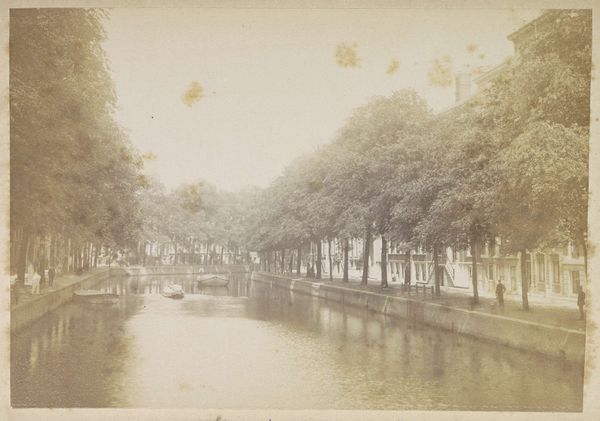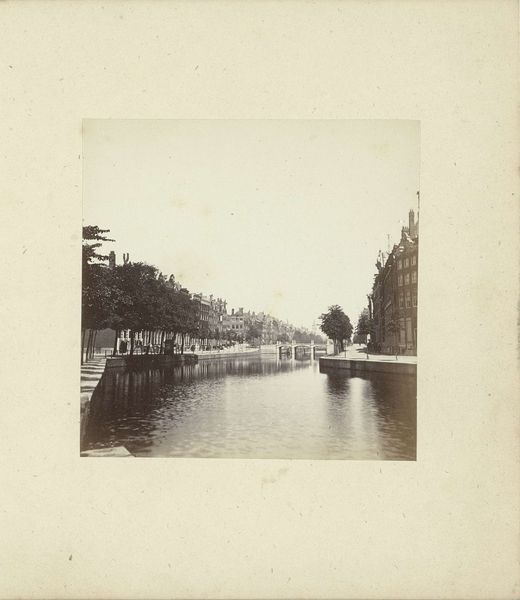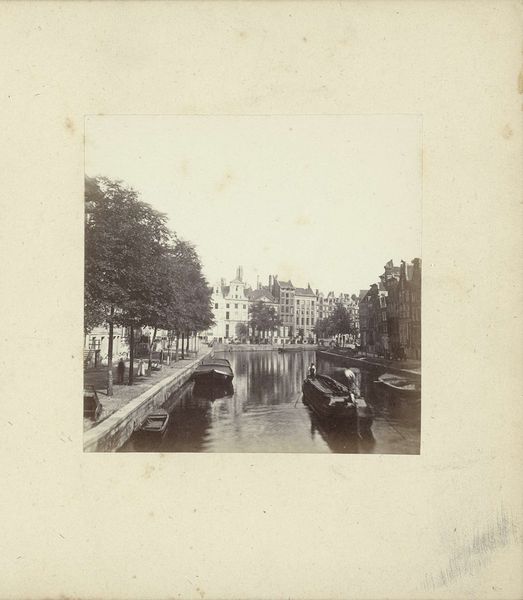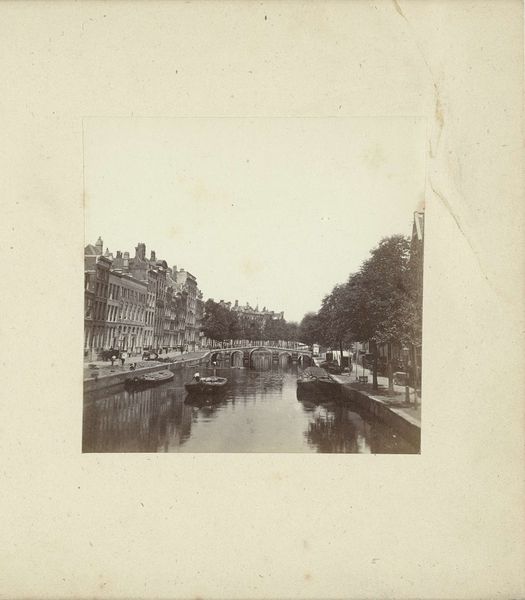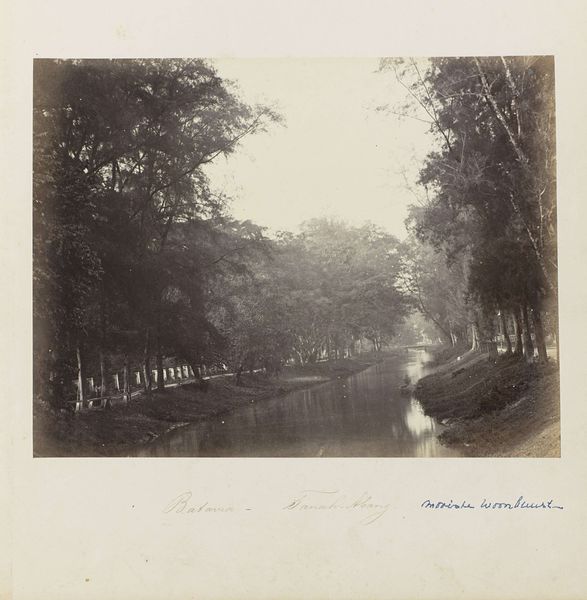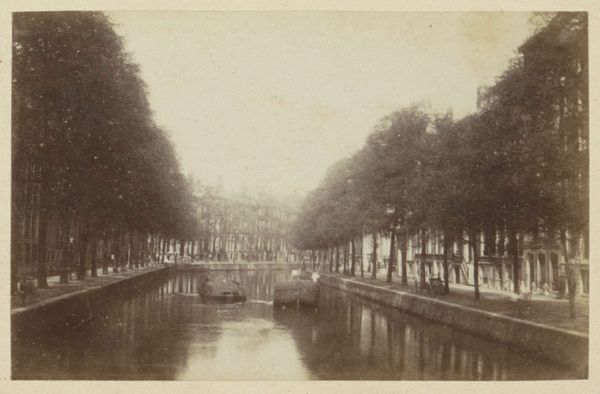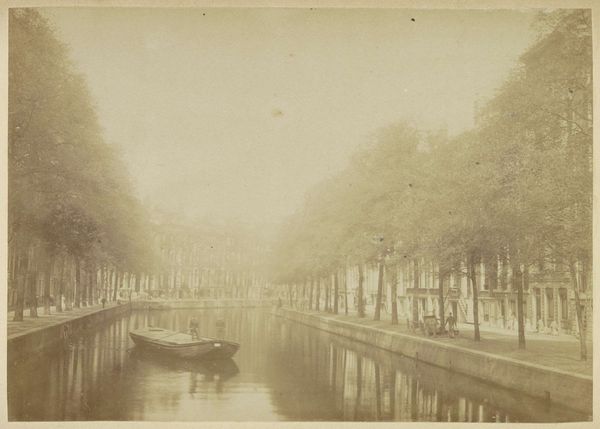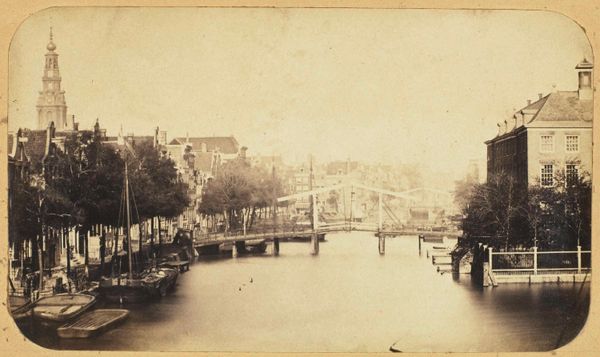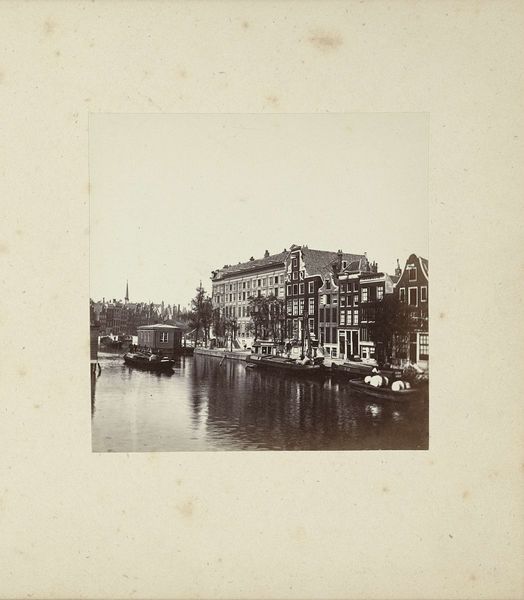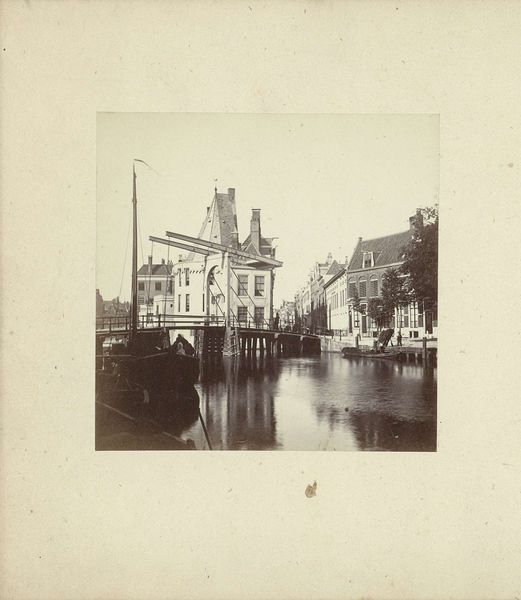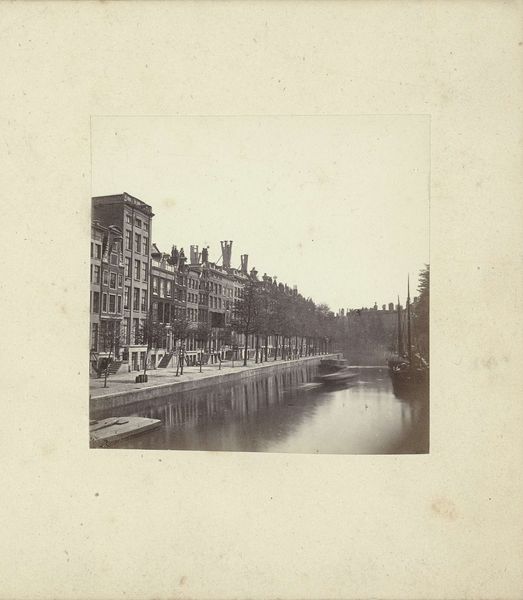
Gezicht op de Gouden Bocht in de Herengracht bij de Leidsestraat in Amsterdam c. 1860 - 1875
0:00
0:00
photography, gelatin-silver-print
#
landscape
#
photography
#
gelatin-silver-print
#
cityscape
#
realism
Dimensions: height 82 mm, width 82 mm, height 145 mm, width 234 mm
Copyright: Rijks Museum: Open Domain
Curator: Here we have an anonymous gelatin silver print, likely dating from between 1860 and 1875, depicting "Gezicht op de Gouden Bocht in de Herengracht bij de Leidsestraat in Amsterdam"—a view of the Golden Bend on the Herengracht canal in Amsterdam. What's your initial impression? Editor: Tranquil. The way the buildings and trees are reflected in the water gives a strong sense of serenity. I wonder about the quality of the gelatin silver process in producing this calming aesthetic. Curator: It's interesting to consider this cityscape not just as a portrait of a place, but as a constructed image reflecting bourgeois values. The Golden Bend, even then, represented wealth and power. How does the burgeoning photographic medium reinforce or challenge these hierarchies? Editor: I'm drawn to the materiality itself – the silver shimmering to reproduce the look and feel of Amsterdam's architecture and foliage. This photograph uses the materials to evoke a sense of luxury, similar to how the city uses brick and stone. How did the conditions of its production reflect the social position of the buildings that line the canal? Curator: Absolutely. It's critical to analyze this in terms of access and agency. Who was behind the camera? Whose stories are centered and whose are erased by this idealized vision? The almost absent human figure perhaps gives more space to contemplate these aspects, placing a value on property and the aesthetics of the urban space that hides the social layers present within. Editor: Yes, those human figures do provide points of focus, which begs questions of labor and how the infrastructure of photography became accessible to various classes of artists. What can the composition, itself, suggest about class and commerce? Curator: Thinking about the legacy of this photograph, it reminds us how urban spaces have historically been sites of both opportunity and oppression. This piece contributes to a complex history where technological progress intersects with ongoing struggles for visibility and justice. Editor: Exactly. Examining this image allows us to reflect on the labor embedded in the gelatin silver printing process and the subject in the work and to re-evaluate the ways in which photographic media shapes perceptions of cityscapes and wealth.
Comments
No comments
Be the first to comment and join the conversation on the ultimate creative platform.
